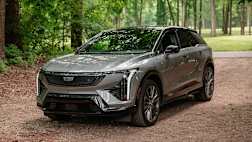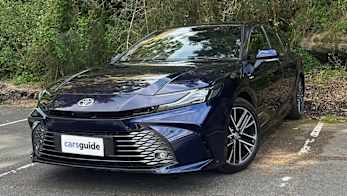Longer, safer, more refined, and it will reach Australian showrooms this year.
Toyota has finally put to rest the fevered speculation sweeping (complete with leaked pictures) about the next Toyota HiAce van, confirming that it will arrive in Australia this year, with new engines, a longer wheelbase and, possibly, a five-star safety rating.
It’s the first time in 15 years that Toyota has revealed an entirely new generation of the huge and hugely popular van and bus range. As you can imagine, technology has moved on a lot in that time, so HiAce buyers can expect improvements measured in leaps and bounds, including more power, more fruit in the cabin and even enhanced ride comfort.
The new HiAce will shift to the “semi-bonneted” design we’ve all goggled over in the spy pics, and the new design - maintains the much-loved cargo space while also providing a stiffer frame, greater stability and manoeuvrability and more pliant suspension.
The sixth generation of Toyota’s big bus, expected to go on sale in mid 2019, will offer a choice of two-seat vans in long wheelbase (LWB) and super-long wheelbase (SLWB) configurations, as well as five-seat LWB crew vans and the 12-seat SLWB Commuter buses so beloved of footy teams.
Toyota Australia’s vice president of sales and marketing Sean Hanley predicted the all-new HiAce would be a hit with both private buyers and fleet and corporate customers.
"All-new HiAce is the total solution for transporting cargo, tourists, workers and families," Mr Hanley said.
"Beyond expanding the vehicle's core mission as capable, durable and reliable transport, it has now stepped up to deliver the comfort and safety that today's motorists demand for private use.”
Hanley also pointed out that the new semi-bonnet design, which gives the HiAce a more modern and roguish front end, will also make maintenance faster and thus cheaper, because it is far easier to get to and replace things like oil, air filters, the battery and coolant.
.jpg)
The new HiAce range will feature two new engines; a 2.8-litre four-cylinder turbo-diesel and a 3.5-litre naturally aspirated petrol, both a choice of six-speed manual or automatic transmissions.
Cargo capacity has been maintained - at 6.2 cubic metres for the LWB or a whopping 9.3 cubes for the SLWB - thanks to a new, longer wheelbase.
.jpg)
Towing capacity is also up by as much as 500kg, with a maximum of 1900kg on some variants.
For those who’ll use the HIAce for hard work, the SLWB two-seat van is capable of accommodating Australian standard pallets (1165mm x 1165mm) through its wider side doors.
Toyota is tipping the HIAce to achieve the maximum five-star safety rating, thanks to its highly rigid structure and updated safety technologies, including AEB with pedestrian and cyclist detection, plus a reversing camera and nine airbags.
.jpg)
There’s even a clever, but optional, digital rear-view mirror, that “provides a wide field of view unobstructed by headrests, occupants or cargo”.
Aussie customers, who’ve bought more than 330,000 HiAces over the years, many of which are no doubt still running, will be particularly thrilled to hear that new MacPherson struts for the front suspension and new leaf-spring suspension at the rear combine to improve handling, stability and comfort.
This, truly, is a whole new van. And it looks like it’s been worth the wait.








.jpg)

.jpg)

.jpg)
.jpg)
.jpg)
.jpg)




_0.jpg)








